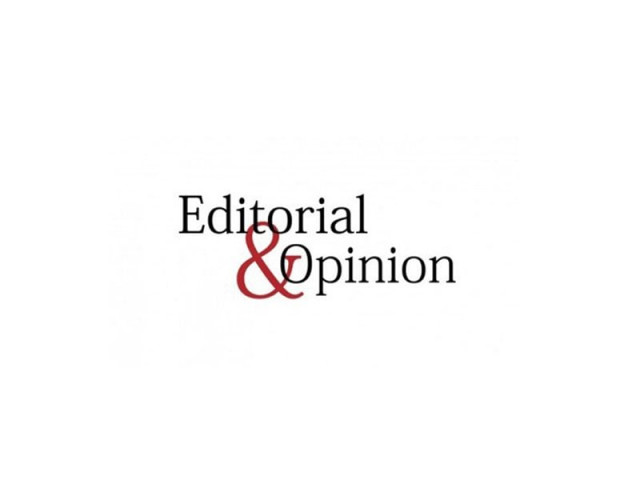Nexus of media and political agenda
In broad terms media agenda have a great role in setting the public agenda

The writer is a political, economy and security analyst and a governance and public policy practitioner. He can be contacted at razapkhan@yahoo.com
The basic premise of agenda-setting research hypothesis is that mass media could configure the public agenda, meaning the matters of significance they think affect their lives, by giving importance to various items in their news agendas. The media through their role in the structuring and construction of socio-political reality influence the public agenda in a manner of which issue should be given much importance. Thus media play an instrumental role in building political campaigns, influencing political decision-making like voting. As Pakistan is going to have elections soon this agenda-setting role of the media has started evolving. The hypothetical agenda-setting concept was first put thorough empirical research by Mc Combs and Shaw (1972) during the 1968 US presidential elections. The researchers collected data both about the agenda of news media and public. Pre-supposing that the responses of undecided voters would be most likely to be measurable, the researchers conducted surveys on undecided voters in Chapel Hill, North Carolina. Apart from it, they conducted content analysis of both national and local electronic and print media which was used by the undecided voters. The finding of substantial linkage between public and news media agendas pertaining to political and social issues established a core bond of concatenated evidence, regarding the role which the press or the media play in setting the agenda of the public.
The indecisive voters of Chapel Hill Study still had their leanings towards one of the two parties, Democratic or Republican. Capitalising upon this information, comparisons were made between the total agenda of the press, including all issues covered by it as well as agenda of issues attributed to the preferred part of voters and its candidates. So it was hypothesised that if the link between voters’ agenda and the total press coverage was higher it was evidence of validity of the concept of agenda-setting. On the contrary if the correlation between voters’ agenda and preferred party agenda was greater it testified the viability concept of selective perception. It was found that 18 out of 24 comparisons favoured the concept of agenda-setting interpretation.
Yet another important study which established the power of the mass media in public political agenda-setting was a series of a laboratory experiment. The studies conducted by researcher Iyengar and Kinder (1987) in which agenda of issues of US defence or environmental pollution were studied. It was clear that news agenda had a great impact on people’s agenda. Because the issues focused on in the experimental newscast were perceived as more important. Some important findings of the studies were that in one experiment even exposure to a single TV news programme had influenced the public agenda. Otherwise, previously conducted research had shown that agenda-setting effects were evident only after viewing a series of newscasts. Brusius and Kepplinger (1990) conducted another study which is assumed as a milestone study of agenda-setting influence of the news media. The researchers used the original research design of Mc Combs and Shaws by comparing a content analysis of a significant West German TV news programme of a year with the weekly public opinion polls on the issues considered as significant agenda-setting effects were recorded. On other issues news agenda lagged public agenda or there was no correlation at all between them. The most important rather underlying findings of the study, which was evident from the pattern of results was that news media not in totality dictate public attention.
Further research on media agenda and public agenda established that issues could be arranged along a continuum oscillating from obtrusive to unobtrusive. The obtrusive issues are those which literally obtrude or impact on our lives in real terms. Rising prices of petroleum and its products have been an obtrusive issue in the lives of Pakistanis. Resultantly, no one in Pakistan is dependent on news media for information regarding that issue. Obviously, daily experience or everyone paying more for petroleum products, being household items, put this issue in general discussion and automatically on the national agenda.
On the contrary people are entirely dependent on news media for information on many other issues like government corruption, situation in Kashmir, Iraq and Afghanistan. In broad terms media agenda have a great role in setting the public agenda regarding unobtrusive but no influence at all regarding obtrusive issues of the day. In uncertain situations individuals are in dire need of information for orientation to the situation. Thus, for voters negotiating a political campaign and the issues therein there are two types of standards explaining his or her level of need for orientation. First, the degree of individual’s interest in the election. Second, the height of uncertainty and ambiguity in individual minds about what the significant issues are.
Published in The Express Tribune, June 14th, 2018.
Like Opinion & Editorial on Facebook, follow @ETOpEd on Twitter to receive all updates on all our daily pieces.













COMMENTS
Comments are moderated and generally will be posted if they are on-topic and not abusive.
For more information, please see our Comments FAQ